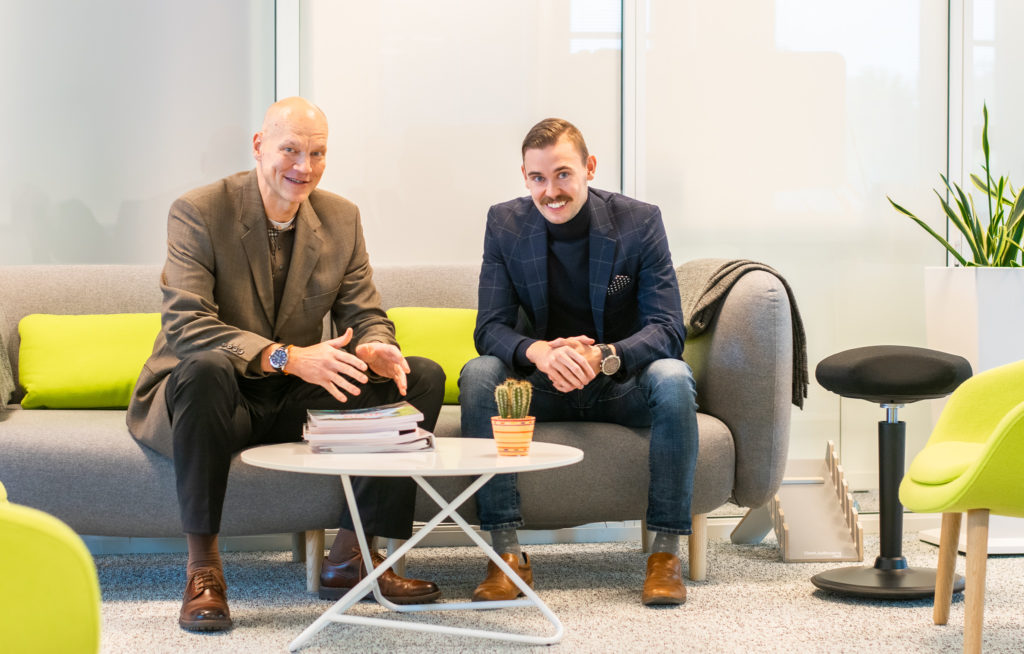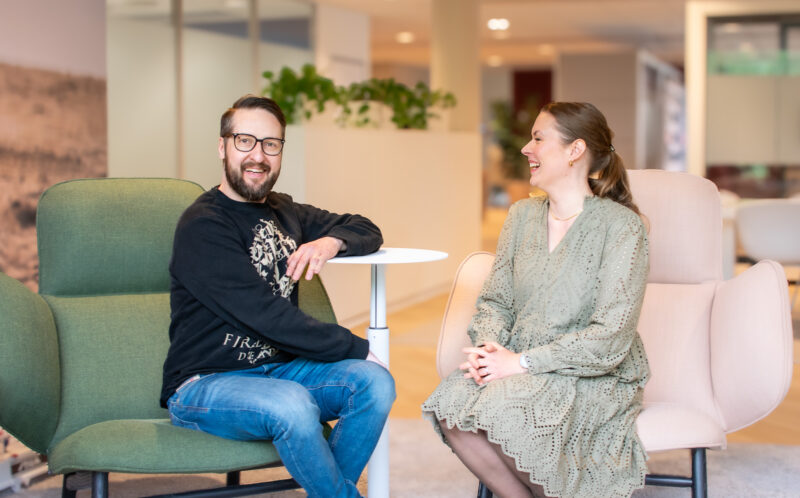Many organisations waste true return on investment on system renewals – learn the fundamentals for continuous development
In many organisations, there is still a misconception about how system renewals really work. Implementation and deployment of a system is seen as a one big push, which, when completed, will be ready to serve its users for the next 10–15 years as is. Why is this misconception a business risk? In this article, Sofigate’s Matti Saari will shatter some persistent perceptions.
Want to know more? Download the full guide
A company has heavily invested in a new, business-essential system. Now that the system is up and running, what happens next? Unfortunately, usually the following:
Once deployed, the stakeholders and decision makers relevant for the renewal project will move on. No real preparations have been made for continuous development of the system. Few people end up taking all the responsibility of what can be described mainly as system maintenance rather than actual development.
There is a lot of talk about the importance of continuous development of business and its systems, but often in reality, actions do not follow the talk. For example, only one person from a remote IT department may be responsible for developing a customer relationship management system.
The old way: development gets forgotten and eventually you have to start from a clean slate
For many organisations, it is unclear who leads continuous development. For example, the role of business leaders and decision makers is often in the background. They sit in steering groups making top-level decisions based on the various proposals given to them, or they hardly show up at all.
The discontinuities between the life cycle stages of traditional system renewals make it difficult to manage continuous development. During planning stage, selected procurement experts and decision makers are involved. Later, during the implementation and deployment stages, the project is taken forward by the project manager, solution consultants and a steering group. Eventually, when the system is used in production, service managers and key users are the ones responsible for the system maintenance and minor development.
At this point, there remains probably no information about the business plans, targets and decisions made in the first phase.
However, the finished system should somehow be developed further. Users are easily dissatisfied with the first version and demand development measures for many different aspects. Starting the development work is difficult when you have to start from a clean slate.
The system is rarely ready to support all the needs of an organisation immediately after deployment. Needs are constantly changing and in an even faster cycle. There are many drivers for change: evolving markets trends and customer needs, renewed national and international guidelines and regulations, or changes in internal organisational structure and processes.
Building a ready-made system all at once no longer serves its purpose when it takes too much time to complete everything. When completed, it may already be outdated – or it may turn out there never was an actual need to start with.
The new way: deploy the basic solution into usage as fast as possible and move on to continuous development
The whole mindset should be turned on its head. New way is to constantly assess, develop and renew operations and systems.
Projects are, in fact, just a bigger leap forward in continuous development. When the current factors of production and systems no longer effectively fulfil the basic conditions of continuous development, they come to an end. After this, the operations and the need for a system must be assessed and renewed with a modest project, after which you return to normal continuous development.
Modern day continuous development is easier to handle due to cloud-based solutions and platforms. Platforms are constantly evolving, just like smartphone operating systems. A platform deployed today will already have received four system updates by next year, one update in each quarter.
Each update improves usability and security, and brings new features to serve the needs of a wide variety of organisations and industries.
In addition to these, a third-party supplier ecosystem is built around the platforms. It constantly creates ready-made solutions and plugins to be integrated as part of the standard platform.
An organisation should deploy the lightest possible cloud-based platform without heavy customisations, while still making sure the solution serves their core business needs. Deploying a smaller entity is faster, feedback is received earlier, and reacting to unexpected changes is easier. You will also know earlier what functionalities users and the business truly need instead of having to guess in advance.
Ensure you fulfil the conditions for continuous development
Discontinuity between the traditional phases of a renewal project become blurred when you realise that the first version of the platform, as its name implies, is only the starting point for further development. By understanding this, the decision makers and other important stakeholders involved do not vanish after the deployment, imagining that everything would be ready after one push.
Solution platforms are the pillars of day-to-day operations, management of the organisation and informed decision-making. It is therefore contradictory to see how in some organisations only one or two people are responsible for maintaining and developing such critical solutions – on top of their numerous other responsibilities.
The true return on investment of the modern platforms is only realized when they are constantly being developed and renewed in sync with your organisation. The preconditions for continuous development must therefore be in order, from leading the development efforts to a clear operating model and to well-defined roles.
Understanding the capabilities and features a solution platform offers to your organisation is also vital. Simply identifying your own business needs is not enough.
Finding a suitable partner will increase your chances to succeed. Choosing the right partner is often the first step towards creating a culture of continuous development.
This paper is part of a series for business leaders in which we present four important cornerstones of ERP renewal. In this story, we addressed cornerstone number 4, “Continuous improvement guarantees the full benefit of the investment”. Other parts can be found here:
- Opening section: Four cornerstones of a successful ERP renewal project
- Cornerstone 1: Businesses must own the renewal project
- Cornerstone 2: Utilise a world-class business platform
- Cornerstone 3: Divide the renewal project into motivating and easy-to-manage sprints
- Cornerstone 4: Continuous development guarantees the full benefit of the investment
About the author
Matti Saari works as a passionate coach, project manager and concept designer in Sofigate’s Business Core Renewal unit. Matti specialises in visualizing and simplifying complex topics related to business technology management.

Eero Noroviita and Matti Saari


